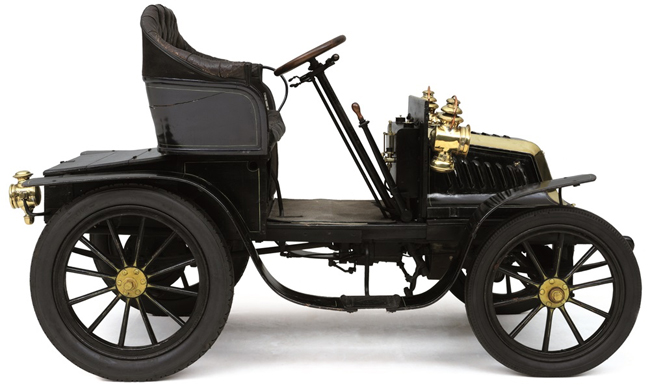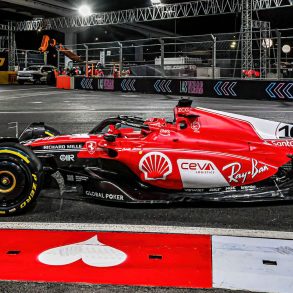Automobiles Darracq
Pierre-Alexandre Darracq was born November 10, 1855, Bordeaux, France. Of Basque origin, he studied as a draftsman at the Tarbes Arsenal. While working at the Hurtu-Hautin & Diligeo factory manufacturing sewing machines and typewriters, Darracq designed a machine that won a gold medal at the 1889 Paris exhibition where one of the major attractions was the Village Nègre (Negro Village), a human exhibit of approximately 400 mostly indigenous people.
In 1891 Darracq, along with and Jean Aucoc, founded Française des Cycles Gladiator at Le Pré-Saint-Gervais. The bicycles were reputed to be reliable but also very affordable. He sold his company in 1896 to Adolphe Clément-Bayard at a large profit and in 1897 he formed A. Darracq et Cie, later Automobiles Darracq at Suresnes, France, making bicycle parts, motorcycles, tricycles and quadricycles including the Millet motor bicycles powered by a five-cylinder rotary engine. He would return later to a rotary engine with disastrous results. Still Darracq had his eyes set upon building cars, not that he had any real affinity towards then, never having bothered to learn to drive. Darracq’s first effort in large-quantity production of automobiles occurred in 1898, when he began building Léon Bollée voiturettes under license. This proved a debacle: the steering was problematic, the five-speed belt drive “a masterpiece of bad design”, and the hot tube ignition crude, proving the £10,000 Darracq had paid for the design a mistake.
In 1900, the company produced its first vehicle with an internal combustion engine. Designed by Paul Ribeyrolles, a graduate of the Arts et Métiers college at Chalons-sur-Marne, this was a 6.5 hp (4.8 kW; 6.6 PS) voiture legére powered by a 785 cc (47.9 cu in) single, and featured shaft drive and three speed column gear change. While not as successful as hoped, one hundred were sold. In 1901, Darracq signed a contract with Adam Opel to jointly produce vehicles in the German Empire under licence, with the brand name “Opel Darracq”. These cars were made up of Opel bodies mounted on a Darracq chassis, powered by a two-cylinder engine. The Darracq automobile company prospered, such that, by 1903, four models were offered: a 1.1 litre single, a 1.3 l and 1.9 l twin, and a 3.8 l four. The Darracq company was acquired by an English financial grouping in 1903, which left Alexandre Darracq in charge. The 1904 models abandoned flitch-plated wood chassis for pressed steel, and the new Flying Fifteen, powered by a 3 l four, had its chassis made from a single sheet of steel. Its exceptional quality helped the company capture a ten percent share of the French auto market.
Darracq built racing cars and founded a school for racing drivers. Henri Farman scored one if the first victories for Darracq winning the light car class at the 1901 Grand Prix de Pau and later the Voiturette class at the Nice-Salon-Nice race.
In 1904 Darracq’s engineer Ribeyrolles designed a racing car with a light chassis and a large 11.259 liter four-cylinder engine producing 100 hp. With this car, factory driver Paul Baras reclaimed the title of fastest on earth from the alcohol fueled Gobron-Brillié driven by Louis Rigolly. Darracq returned two years later with an all new ohv V8 engine developing a claimed 200 hp, it was by far the most powerful racing car in the world and remained so for quite a number of years. In late December of 1905 on the Arles-Salon road in southern France, the outspoken Victor Hémery set a new Land Speed Record stopping the clocks in 20 3/5sec and 108.59 mph. Increasing the record the following year to 197.06 km (122.45 miles), the first car to travel two miles per minute.
Gasped L. Gerard, who reported on the car’s speed run for La Vie Automobile: “
Can you imagine what that frightening speed of 5 metres a second [110 mph] must be like? No? Well, it’s that of hurricanes that flatten houses and trees, of tempests that exert the formidable pressure of 300 kg per square metre on the surfaces that they meet this time, without any exaggeration, the car has beaten the train”.
Friedrich Franz Opel raced an Opel-Darracq in the 1904 Gordon Bennett Cup but retired. Later that year Hemery had more luck when he drove the German Opel-Darracq to victory at the Hamburg-Bahrenfeld motor race. The following year the Darracq #18 driven by Hemery won the Circuit des Ardennes at an average speed of 61.48mph, his teammate, Louis Wagner came in 4th. A day earlier Wagner had won the race for Voiturettes.
At the 1905 Vanderbilt Cup Race in the United States Hemery won again at an average speed of 61.5 mph. The 678.6 ci engine produced 80 hp and had a wheel base of 106 inches or nearly 9 feet. In 1906 the fiery Hemery who had several altercations with race authorities over the years was let go by the Darracq factory. A 120 hp version of the Darracq won the Vanderbilt Cup race for the second year running, this time driven by Wagner. The wining car was later sold to Lord Hale of Pembroke. In October 1907 Hale was touring Western Quebec when the Darracq suddenly burst into flames and was destroyed.
Hoping to duplicate what Henry Ford was doing with the Model T in the United States, Darracq introduced a £260 14–16 hp model in 1911. These, at the founder’s insistence, was powered by a Henriod rotary valve engine, which was underpowered and prone to seizing. It proved disastrous to the marque, and Darracq resigned from running the company. Another licensee of the Henriod patent was Fernand Charron who used it in his Alda cars. It was no more successful than it had been for Darracq.
In 1913, Darracq, tiring of the automobile business sold out to British financial interests led by Owen Clegg, who relocated to the Paris headquarters to take over as the Managing Director of the company. Clegg, designer of the proven Rover Twelve, sensibly copied the Twelve for Darracq’s new model. The factory at Suresnes was retooled for mass production, making it one of the first in the industry to do so. The 16HP Clegg-Darracq was joined by an equally reliable 2.1-litre 12HP car, and soon the factory was turning out sixty cars a week; by 1914, 12,000 men rolled out fourteen cars a day.
Alexandre Darracq pursued other interests including running the Casino at Deauville. After World War I, he chose to retire to the French Riviera where he joined Belgian investors that took over the troubled luxury Hotel Negresco in Nice. He died in 1931 at his home in Monte Carlo. Darracq’s former company merged with Talbot–Sunbeam in 1920 and produced automobiles under the trademarks Darracq, Talbot–Darracq, and Talbot before it was dissolved in 1952.

















